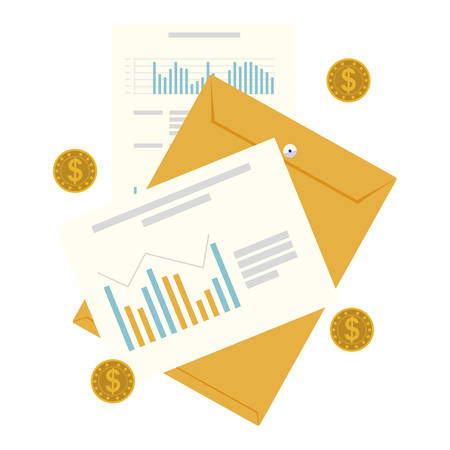Introduction to Staking and Yield Farming
If you’ve been hanging around the crypto world in the U.S., chances are you’ve heard the buzz about staking and yield farming. But what do these terms really mean, and why should anyone—from total beginners to seasoned investors dreaming of financial freedom—care?
What is Staking?
Staking is like putting your crypto to work. Imagine you have some Ethereum or Solana just sitting in your wallet. Instead of letting it gather digital dust, you can “stake” those coins, locking them up to help support network operations like validating transactions. In return, you earn rewards—kind of like earning interest at a bank, but usually with higher potential returns (and risks).
Quick Facts: Staking
| Aspect | Description |
|---|---|
| Main Purpose | Support blockchain operations (validation, security) |
| Typical Rewards | Crypto tokens (often the same asset staked) |
| Lock-up Period? | Often required; varies by project |
| Risk Level | Moderate (smart contract risk, token price fluctuations) |
What is Yield Farming?
Yield farming takes things up a notch. Here, you provide liquidity—basically lending your crypto to decentralized finance (DeFi) protocols. In exchange, you get rewarded with more tokens. Yield farming strategies can be simple or super complex, sometimes involving multiple platforms to maximize returns.
Quick Facts: Yield Farming
| Aspect | Description |
|---|---|
| Main Purpose | Provide liquidity for DeFi protocols and earn rewards |
| Typical Rewards | Platform tokens, trading fees, bonus tokens (“yield”) |
| Lock-up Period? | Sometimes; depends on protocol and strategy used |
| Risk Level | Higher (market risk, smart contract exploits, impermanent loss) |
Why Staking & Yield Farming Matter in the U.S.
The U.S. crypto space is rapidly evolving. For both newbies curious about building wealth and veterans striving for financial independence, staking and yield farming offer ways to make your assets work harder. They’re more than just passive income—they represent new opportunities for growing your net worth outside traditional systems.
2. Taxation Guidelines for Staking and Yield Farming
When it comes to staking and yield farming, understanding how the IRS views your rewards is key to avoiding surprises at tax time. Let’s break down what you need to know as an American crypto holder.
How the IRS Classifies Staking and Yield Farming Rewards
The IRS treats most staking and yield farming rewards as ordinary income at the moment you receive them. This means when you earn new tokens or coins through these activities, their fair market value (in USD) on the day you receive them is taxable as income—just like getting paid in cash or stock.
Common Crypto Activities and Their Tax Treatment
| Activity | Taxed As | When Taxed |
|---|---|---|
| Staking Rewards | Ordinary Income | When received/credited |
| Yield Farming Rewards | Ordinary Income | When received/credited |
| Selling Earned Tokens | Capital Gain/Loss | When sold/disposed of |
Recent IRS Guidance: What’s Changed?
The IRS has made it clear that if you earn tokens via staking or yield farming, you must report their value as income—even if you don’t sell them immediately. In 2023, the IRS reaffirmed this rule in updated FAQs and in court cases, confirming that “constructive receipt” applies. This means if tokens are credited to your wallet—even if you don’t move or sell them—they’re considered income.
Key Points from Recent Updates:
- You must report all staking/yield rewards as income.
- The fair market value is calculated when rewards become available to you—not just when you sell.
- If you later sell or swap those tokens, any change in value counts as a capital gain or loss.
- No exceptions for small amounts: even “gas fees” earned from providing liquidity may be taxable.
Best Practices for Staying Compliant with the IRS
- Track All Transactions: Use crypto tax software or spreadsheets to log when and how much you receive from staking/yield farming.
- Know Your Dates: Record the date each reward is credited; this sets your cost basis for future gains/losses.
- Report Annually: Include all rewards as “Other Income” on your tax return (typically Schedule 1).
- Keep Up with Guidance: The IRS updates rules regularly—stay informed by checking official IRS resources or working with a crypto-savvy CPA.
Quick Example: Reporting Staking Rewards on Taxes
| Date Received | Token Amount | USD Value (at receipt) |
|---|---|---|
| March 10, 2024 | 0.5 ETH | $1,900 |
| April 15, 2024 | 0.7 ETH | $2,100 |
| Total Reported as Income in 2024: | – | $4,000 |
This approach helps keep your staking and yield farming journey stress-free—and ensures Uncle Sam doesn’t come knocking unexpectedly!

3. Reporting Crypto Earnings: Best Practices
Step-by-Step Guide to Tracking Staking and Yield Farming Income
If you’re staking crypto or diving into yield farming, the IRS expects you to report every dollar earned—even those tiny bits that trickle in daily. Keeping everything organized from day one saves you a ton of headaches come tax season. Here’s how you can do it, using tools and resources familiar to most U.S. crypto enthusiasts.
Step 1: Set Up a Dedicated Crypto Tracking System
You don’t need to be a spreadsheet wizard! Start simple:
- Google Sheets/Excel: Create a sheet with columns for Date, Asset, Source (staking/yield farming), Amount Earned, USD Value at Receipt, Platform, and Transaction ID.
- Crypto Tax Software: Platforms like CoinTracker, Koinly, and TokenTax connect directly to most wallets and exchanges. They automatically pull transaction data, calculate fair market values, and help organize everything by income type.
Step 2: Record Every Earning Event
Staking and yield farming often pay out daily or weekly. For U.S. taxes, you need to capture the value of each reward at the moment it hits your wallet—no exceptions.
| Date Received | Crypto Earned | USD Value at Receipt | Source (Platform) | Transaction ID/Hash |
|---|---|---|---|---|
| 2024-06-01 | 0.05 ETH | $175 | Celsius Network – Staking | 0xabc123… |
| 2024-06-02 | 20 USDC | $20 | Aave – Yield Farming | 0xdef456… |
This table format helps keep things crystal clear if the IRS ever asks for details.
Step 3: Use U.S.-Centric Tools for Valuation
- Cronos API & CoinGecko: Use these websites or their APIs to get historical price data in USD for every earning event.
- Your Exchange Statements: Most U.S.-regulated exchanges provide downloadable CSVs with transaction histories in dollars.
- Koinly/CoinTracker: These tax tools auto-convert earnings into USD based on real-time exchange rates at receipt time—making life way easier.
Step 4: Organize Your Tax Documents Early
- Keep Everything Together: At year-end, download all your spreadsheets, software reports, and platform statements. Save them in a dedicated folder labeled “2024 Crypto Taxes.”
- Form 8949 & Schedule 1: In the U.S., staking/yield farming rewards are reported as ordinary income on Schedule 1 (Form 1040). When you later sell/redeem those coins, use Form 8949 for capital gains/losses. Many tax softwares export these forms automatically based on your tracked data.
Recommended Resources for American Crypto Investors
- IRS Form 8949 Instructions (PDF)
- About Schedule 1 (Form 1040) – IRS.gov
- TaxBit’s U.S. Crypto Tax Guide
- Bitcoin.Tax Calculator Tool (U.S.)
If you make it a habit to document your staking and yield farming income as you go, reporting will feel less like a daunting chore—and more like just another step on your road to financial freedom!
4. Common Tax Pitfalls and How to Avoid Them
Overlooking Staking and Yield Farming Rewards as Taxable Income
One of the biggest mistakes U.S. crypto investors make is assuming that staking and yield farming rewards aren’t taxable until they cash out. In reality, the IRS treats most staking and farming rewards as income the moment you receive them—even if you haven’t sold or traded them yet. Failing to report these can lead to hefty penalties down the road.
Real-World Example
Emily staked her Ethereum on a DeFi platform and earned 2 ETH over the year. She didn’t sell them, so she thought she didn’t owe any taxes yet. When she filed her return, she left out this income. Months later, the IRS sent her a notice for unreported earnings, plus interest and penalties.
How to Avoid It:
- Always record the fair market value (in USD) of your staking or farming rewards at the time you receive them.
- Include this amount as “other income” on your tax return, using Form 1040 Schedule 1.
Mistiming Transactions and Missing Cost Basis Records
If you move assets between wallets or platforms, or reinvest your rewards, tracking cost basis (the original value when you received your crypto) is crucial. Many investors forget to keep records of each transaction, making it hard to calculate capital gains or losses correctly when they eventually sell.
Scenario: Lost in Transaction History
Jake harvested yield from several DeFi protocols throughout the year, then swapped tokens multiple times. Come tax season, he couldn’t figure out what he originally paid for each token—making accurate reporting almost impossible.
How to Avoid It:
- Use crypto portfolio tracking tools or spreadsheets to log every transaction date, amount, and USD value.
- Download CSVs from exchanges and DeFi platforms regularly; don’t wait until tax time.
Treating All Crypto Income the Same
The IRS differentiates between ordinary income (like staking/farming rewards) and capital gains (from selling/trading). Mixing these up can lead to errors in how much tax you owe—and possibly an audit.
| Type of Crypto Activity | IRS Classification | When Its Taxed |
|---|---|---|
| Staking/Yield Farming Rewards | Ordinary Income | When Received |
| Selling/Trading Crypto | Capital Gains/Losses | When Sold/Exchanged |
| Airdrops & Hard Forks | Ordinary Income | When Received |
How to Avoid It:
- Categorize each transaction correctly in your records—income vs. capital gain events.
- If unsure, consult a crypto-savvy tax professional before filing.
Ignoring State Taxes on Crypto Earnings
Your federal tax return isn’t the end of the story—many states also require you to pay tax on crypto income. For example, California taxes all income sources equally, including staking rewards.
How to Avoid It:
- Check your state’s rules on digital asset taxation—these can differ widely from federal laws.
- If you move states during the year, track where you earned your crypto income for proper allocation.
Summary Table: Top Mistakes & Simple Fixes
| Mistake | Pitfall Example | How to Prevent It |
|---|---|---|
| Not Reporting Rewards as Income | Earning but not declaring staking/farming tokens | Add FMV as “other income” annually |
| Poor Record Keeping | Losing track of cost basis after swaps/moves | Log every transaction with date and USD value |
| Mislabelling Income vs Capital Gains | Treating all crypto profits as same type of income | Categorize transactions properly; get expert help if needed |
| Irrigating State Tax Obligations | No reporting for local state returns | Review state laws; allocate earnings correctly by location |
By watching for these common tax mistakes and following best practices, you’ll keep more of your hard-earned crypto while staying compliant with IRS and state rules. The key is consistency: record everything as you go and double-check categories before filing. If things get complicated—or you just want peace of mind—a qualified crypto tax pro can be worth their weight in Bitcoin!
5. Staying Auditable: Practical Recordkeeping Habits
If you’ve ever met someone who’s been through an IRS audit, you know it’s no joke—especially when staking or yield farming is part of the mix. Let’s dive into real-life stories and some hands-on strategies to help keep your crypto journey smooth and IRS-proof.
Stories from the Trenches: When Good Records Save the Day
Take Mike, a DeFi enthusiast from Texas. Last year, he got an unexpected letter from the IRS asking for details about his staking rewards on Ethereum 2.0 and yield farming activities on Compound. Thankfully, Mike had kept a spreadsheet with every transaction—date, amount, USD value at the time, platform, and wallet address. It wasn’t fun, but it was all there. He sent over his records, and after a few weeks (and a couple of emails), the IRS was satisfied. No extra taxes. No penalties. Just a sigh of relief.
Contrast that with Sarah from California. She kept her transactions in her head and lost access to one of her wallets. When the IRS came knocking, she struggled to reconstruct her activity history. The process dragged on for months, and she ended up paying more than she expected—plus a penalty for incomplete records.
What Records Should You Keep?
Here’s a quick guide on what to track for staking and yield farming:
| What to Record | Why It Matters |
|---|---|
| Date & Time of Transaction | For accurate tax calculation and proof if audited |
| Type of Activity (Staking/Yield Farming) | Differentiates between income types for reporting |
| Platform/Protocol Used | Shows where activity occurred; helps verify transactions |
| Wallet Address Involved | Links transactions to you; supports tracking transfers |
| Token Received or Sent | Needed to determine gains/losses in USD value |
| Fair Market Value in USD at Time of Receipt | Establishes taxable income basis per IRS rules |
| Transaction Fees Paid | Deductions can reduce taxable income or gains |
Simple Strategies Everyone Can Use
1. Automate Where Possible
Use crypto tax software like CoinTracker or Koinly to sync wallets and exchanges automatically. They pull in data so you don’t have to enter every transaction by hand.
2. Keep Backups—Always!
If your main computer crashes or your cloud account gets locked out, you don’t want to lose everything. Export spreadsheets monthly and back them up on an external drive or secure cloud folder.
3. Save Official Docs & Screenshots
Screenshots of key transactions (like big withdrawals or protocol migrations) and emailed confirmations can be lifesavers if data disappears from platforms.
4. Note Your Reasoning for Unusual Moves
If you do something odd—like moving assets between protocols for an airdrop opportunity—jot down a quick note explaining why. If asked later, you’ll remember what happened.
5. Review Annually Before Tax Season
A yearly review helps catch errors before filing your return—and keeps surprises at bay if the IRS reaches out years down the line.
The bottom line? Good records aren’t just about taxes—they’re your shield against confusion, stress, and unnecessary bills when Uncle Sam wants answers.
6. Optimizing for Financial Goals while Staying Compliant
If you’re hustling towards financial freedom in the U.S., staking and yield farming can be game-changers—if you know how to play by the rules. Let’s break down how you can grow your crypto stack, maximize your gains, and keep Uncle Sam happy at the same time.
Start with Your Why: Mapping Staking & Yield Farming to Your Goals
Financial freedom looks different for everyone—maybe it’s early retirement, a side hustle turning into your main gig, or just having more options for your family. The key is making sure your staking and yield strategies fit those goals and won’t leave you with a surprise tax bill.
Key Questions to Ask Yourself:
- What’s my timeline? (Short-term vs. long-term gains impact taxes differently)
- Am I reinvesting or cashing out?
- How much risk am I comfortable with?
- Do I understand the tax triggers for my activities?
Stay Compliant: Best Practices for U.S. Crypto Taxes
The IRS treats crypto rewards from staking and yield farming as taxable income—even if you don’t sell right away. To keep things smooth, here are some must-do steps:
| Action | Why It Matters | Pro Tips |
|---|---|---|
| Track Every Transaction | You need records for every reward, swap, and sale | Use crypto tax software like CoinTracker or Koinly |
| Note Fair Market Value (FMV) on Receipt | You pay income tax based on FMV when rewards hit your wallet | Set reminders to record FMV daily/weekly if rewards are frequent |
| Separate Business from Personal Activities | Your tax rate and deductions may change based on activity type | Create a spreadsheet or use separate wallets for business vs. personal |
| Understand Holding Periods | Selling within a year = short-term capital gains (higher taxes) | If possible, hold assets for over 12 months for lower rates |
| Consult a Tax Pro Early | Avoid costly mistakes; IRS penalties can be steep! | Look for CPAs familiar with DeFi and crypto regulations |
Aligning Actions with Financial Freedom: Real-World Scenarios
If you’re earning $500/month in staking rewards and plan to HODL until next year, those tokens are taxed as income now. But if their value increases and you sell later, that’s another taxable event (capital gain or loss). It pays to think ahead:
- Aim for Long-Term Gains: If possible, stagger sales to qualify for long-term capital gains rates.
- Diversify Platforms: Don’t put all your eggs in one DeFi basket—spread out risks and monitor each platform’s reporting tools.
- Create an “Uncle Sam” Fund: Set aside a percentage of rewards for taxes so there are no surprises come April.
- Leverage Losses: If you take a hit on one token, you may be able to offset other gains—track everything!
Your Roadmap: Making Smart Moves Without Breaking the Rules
- Set clear financial goals.
- Select staking/yield opportunities that fit your comfort zone.
- Automate recordkeeping.
- Plan withdrawals strategically (for better tax outcomes).
- Check in with a crypto-savvy tax advisor at least once a year.
No matter where you are on your journey to financial independence, aligning your staking and yield farming activities with smart compliance habits will help you build wealth—and peace of mind—in the ever-evolving world of U.S. crypto taxes.


